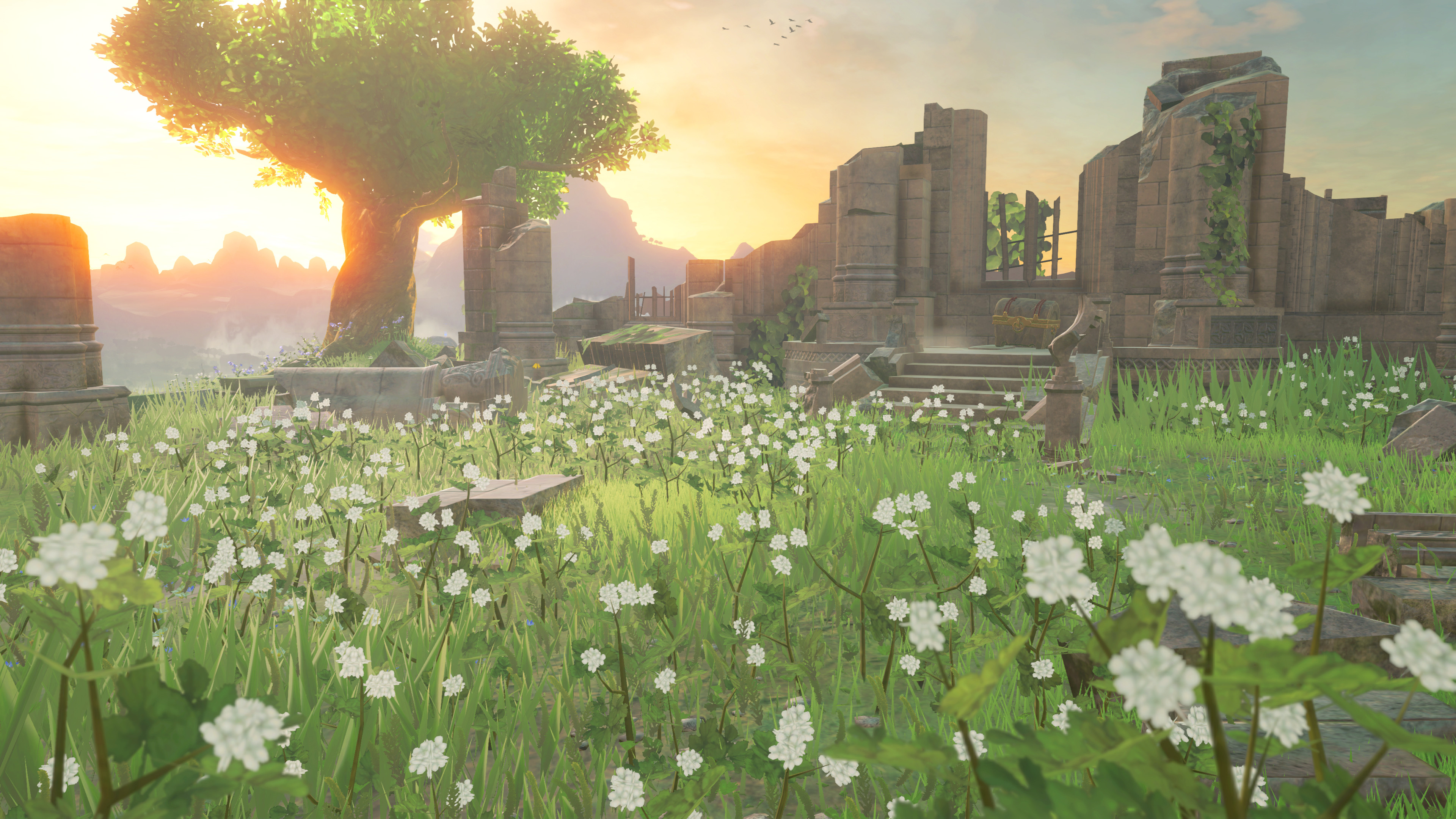Three Days in Hyrule
Early Thoughts on Breath of the Wild
The hype for over the last several months has finally exploded with the recent release of the new Nintendo Switch - and the latest installment in the Legend of Zelda series, Breath of the Wild.
As is the case with many people my age, the original Legend of Zelda game was one of the very first complete, cohesive video games I’d ever played, and it helped sparked an obsession in video games, and world building that is still going strong today. Although, the recent installments to the series have been more and more of a let-down, I have anticipated this release with bated breath, hoping that Nintendo will deliver on it’s promise that they are finally returning to their roots to bring back what has been missing from Zelda, and that I can lose myself in the land of Hyrule once again, wrapped up in wonder, excitement, discovery, and adventure.
I picked up my copy at Midnight on release day, and spent 3 days playing it almost non-stop. I’m about halfway through the game (maybe?), and I wanted to take some time to talk about some of the thoughts that are bubbling up from the experience - in order to start a dialog, or even just to help solidify, and exorcise them from my brain.
So, I hope you will take a moment to read through this heavily opinionated post, and join me to discuss it further at the end.
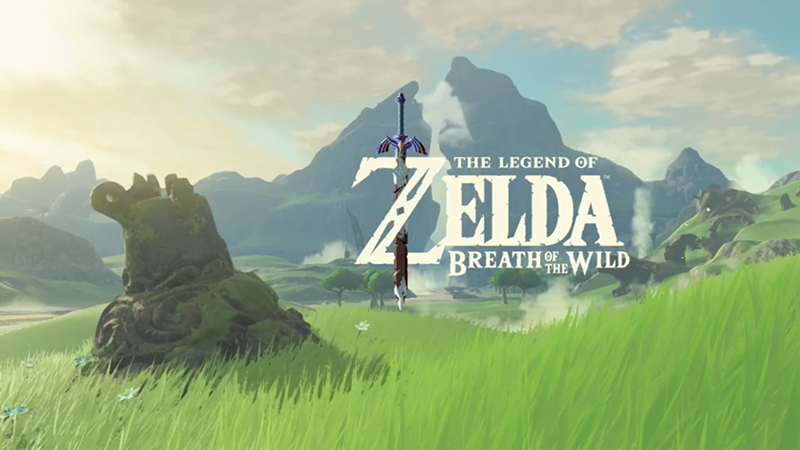
Note: While I avoided any major plot details, this post does talk about some of the locations and details from Breath of the Wild that might be considered spoilers. If you're trying to play the game as blindly as possible, maybe wait and come back to this later!
The Past
First, I’d like to talk about the past. What the Zelda series means to me, how it has evolved, and just where I’m coming from.
The original Legend of Zelda was one of 4, very early games Nintendo developed in their formative years as a console developer that each focused on one ‘style’ of gameplay.
Super Mario Bros was a side-scrolling obstacle course.
Kid Icarus was the vertical climbing game.
Metroid combined vertical and horizontal platforming and combat.
And Zelda did away with scrolling to put the game entirely into a series of 1-screen-large ‘rooms’, and shifted to a top-down perspective to change the way movement and combat worked.
Zelda 1 encompassed the idea of being left to your own devices. The game iconically starts you out in an almost random clearing, with nothing but a (small) shield, 3 hearts, and a ‘map’ that is really not much more than a compass that tells you where you are in relation to the overall world.
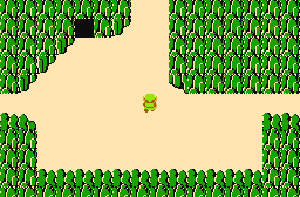
There is some simple intro text, if you let the start screen sit for long enough, that gives you a little bit of backstory, and a simple-sounding goal: locate the 8 pieces of the Triforce to rescue Princess Zelda from Ganon.
The player is then, effectively, cast into the world, and allowed to go almost anywhere they want. It utilizes some interesting, subtle, guiding mechanics that serve only to help get the player in the right direction.
The game capitalizes on giving little to no information to the player, while rewarding perseverance, and experimentation. When you find a new item in a dungeon, and then defeat the boss and emerge into the light of the overworld again, you think: “Hang on, where have I seen a place that I couldn’t get to before?” and when you go back and see that you can use that new item to bypass an obstacle in a dungeon or in the world, it feels very rewarding.
Dungeons were a lot less about puzzles back then, too. They were more like simple mazes filled with enemies. The challenge came first when you were confronted by a new type of enemy, and later when the game started combining enemies, or bringing back past bosses as regular enemies in harder dungeons. If you knew the trick (like how Dodongo dislike smoke), you could dispatch these foes with relative ease, or be locked in an impassable battle for days.
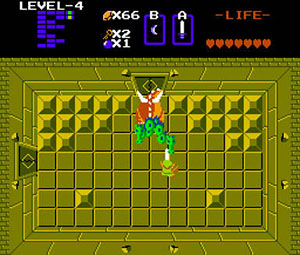
Mark Brown does a very good job of summarizing all of this in his video: The Magic of the First Legend of Zelda, you should go and watch that real quick.
To wrap this up, I just wanted to stress that the original Zelda game had a very precise formula: One, large, connected Overworld that the player had almost free reign to explore unimpeded, and then multiple dungeons, some hidden, which relied on honing your memory and spatial reasoning to navigate, while allowing you to enjoy the fast-paced stabbing combat action against a wide variety of unique enemies, and interesting bosses. It gave little information outside of cryptic hints from cave and tree dwelling old-people, and you had a strong sense of progression and attachment. You didn’t find any old raft, you found THE raft. You didn’t just upgrade to a random sword, you got THE Master Sword and so on. The environment, the items, and the lack of a narrative all combine to create an experience that I wish I could revisit with a clean slate.
Since those early beginnings the series has evolved. The first sequel, Zelda 2, was a true continuation of the story: some time has passed since the first game, and we’ve pulled out all the stops to bring you a bigger world to explore, and richer lore.
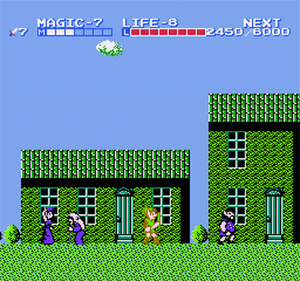
I would argue that this is one of the biggest problems with Zelda 2. It broke the formula in a lot of ways, not only in switching to a side-scrolling mode for combat/exploration, but in making the world be so much denser than before. There are way more locations, many of them given obscure names and mentioned cryptically by the now overabundant population. The dungeons are way more confusing than before, and the combat relies heavily on you being able to maneuver your sword independently of Link to hit an enemy in the right spot without them hitting your stationary body, etc.
Zelda 2 is often touted as the ‘worst’ of the main series of games, and I can see why it could get that reputation, but, I’ll come back to this a little later on.
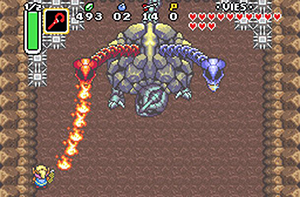
It’s no surprise that they went back to a top-down perspective for the next game in the series, a Link to the Past. For me, this is still the pinnacle of the series. The game is exactly what the first one was, and more. There is more hand-holding now, and you have a lot more guidance and short-term goals, at least, earlier on in the game, but it still feels like a large world - with enough interesting, different locations that you can remember where things are for the most part. Dungeons, at this point, have mostly shifted towards being more about puzzles than combat, but the bosses really shine this time around, being a combination of bullet-hell-dodging and wait-for-an-opening combat.

An aside, though, my absolute favorite moment from any of the Zelda games so far is in Link to the Past. It is mentioned in the game, and in the manual, that the 'Golden Land' (aka Dark World) is a magical realm that alters a person's form to match their true nature. So, when the Thief Ganondorf makes his way to the Golden Land and takes control of the Triforce (Changing the realm into the Dark World in the process), his gluttony, and desire for power is amplified and he is changed into the giant, demonic boar.
Similarly, whenever Link enters the Dark World, without the power of the Magic Pearl (which lets one retain their true shape), he is transformed into a harmless, pink bunny - because he was never meant to be a warrior, he's a simple, peaceful person who was forced to take up his quest, and the sword in order to save the Princess and the World.
I just love that!
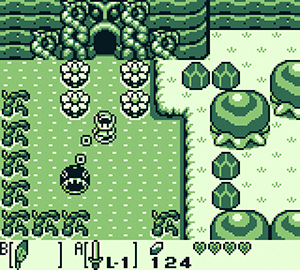
Link’s Awakening took this new Zelda style and brought even more of it. This time, though, there were a lot more ‘lock-and-key’ systems in the overworld than before. You are very compartmentalized on where you can go, and when. The dungeons are way more puzzle-ful, although the sense of collecting unique and interesting items and getting stronger along the way is still there.
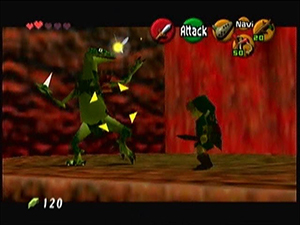
…and then we get to the first 3D Zelda game, Ocarina of Time, where things really start to go downhill. They lean HEAVILY into having a strong story, which, unfortunately, slows the game down insanely. The world is smaller than ever, with huge sections cut off until you finish each area one-by-one, with rare backtracking into previous territory. Navi is the manifestation of ‘too much hand-holding’, and most dungeons are almost entirely puzzles, with a few enemies that take way too much time to fight, and a lot of ‘aim at this to progress’ type solutions. Bosses have now also turned into ‘hit the weak point with the new item you just got!’. They even went back and took a page from Zelda 2’s book, removing the powerful feeling of slaughtering lots of weaker enemies as you get stronger with having more ‘regular’ enemies that require you to wait, block, and strike at the right moment to hit them. Don’t believe me? Remember that first Darknut enemy in the first Palace in Zelda 2 that you spend 5 minutes trying to hit where his shield isn’t? Compare that to like EVERY OOT enemy - the Lizalfos fights, the Darknuts, etc.
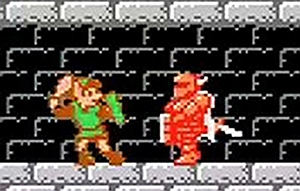
Unfortunately, as time goes on, we get more and more games that further distill this brand of Zelda, and we move further and further away from what was truly great and engaging about the first and third iterations. Instead of being a game about discovery and forging your own path, it becomes a railroad: do all of these things, in order, to experience this really great story we made for you with maybe a little bit of side-questing if you want - but not too much!
…and this is all just in regards to how the game and gameplay FEEL - don’t get me started on the hot mess that they call a coherent story starting with OOT, that’s a topic for another blog post.
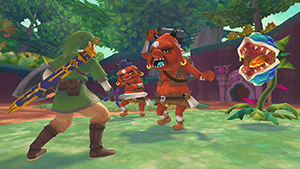
So that brings us to the present. Nintendo promised that with this new game they were going to be going back to their roots to bring back what was great about the series to begin with. They hyped us with footage of a massive, sprawling world, and promised that we could go anywhere, and do anything we wanted. They promised to shake up the formula a bit, which I am definitely on board with. So, after three days of playing, how did they fare?
The Good
First off, the gameplay feels amazing. I’m playing with the Pro Controller, and moving, jumping(!), climbing, gliding, blocking, swinging weapons, shooting arrows - all of it - feels really good. Gone are the waggle controls of Skyward Sword. If I want to swing my sword, it’s just a button press. There is some motion control enabled by default for aiming (which you can disable), and there are some puzzles that require motion controls which can go die in a fire, but that’s it.
The overworld is truly gigantic. I’ve played for this long and have managed to unveil about half of the regions in the game. That does not mean I’ve thoroughly explored these areas, though, far from it! Even when I have a destination in mind, I find myself just running in a straight-ish line and stumbling upon tons of new places and things ALL OF THE TIME.
I think if you were going to modernize the feeling of the original Zelda 1’s overworld, and try to capture that feeling of uncovering locations in the world that are jam-packed with hidden secrets and flavor, without cramming backstory down your throat all the time - Breath of the Wild nailed this almost 100%.
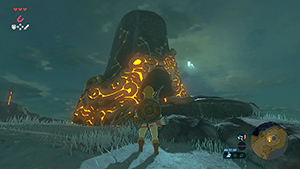
The landscape is covered in shrines - some of them are more hidden than others (although you are given the ability to sort of radar-scan for them when nearby). These shrines are basically miniature dungeons. The first few are required to progress the game, and act as the game’s tutorial, in a way. They (the first 4 shrines) each give you access to a new rune power, and then teach you how to use them. After that, all of the shines are totally optional, and able to be completed in any order whatsoever. There are 4 “flavors” of shrine that I’ve come across - Give/Teach a new power (there are only those first 4 that I know of), Solve a Puzzle, Combat, and ‘Freebies’. Every shrine contains: one or more treasure chests, typically with ore (that can be sold), or semi-rare weapons or items, and a monk at the end of the shrine that gives you a Spirit Orb (the replacement for Heart Pieces in this game).
So far, all of the shrines have been pretty interesting. The puzzles usually take a few moments to think about before being able to solve. The combat ones are probably the least interesting - you just have to defeat one of the small guardian enemies to get a prize. The Freebies are just a chest and a monk, but they are usually found at the end of some kind of elaborate challenge that takes place in the overworld, like carrying an orb along a spiral-shaped beach past a bunch of enemies to unlock the shrine.
I would say that the shrines are pretty fun, but we’ll come back to them later.
The rune powers that you get, along with the glider, give you some neat tricks that you can use - usually inside of the shrines to solve puzzles, or to find treasure in the overworld. They are fun to use, but not used a ton outside of the shrines… more on this later.
Overall, I am enjoying the game, I’m meeting familiar faces, recognizable places, and old races. Searching the overworld for secrets is fun, and there’s a lot to see and do. But it’s not perfect…
The Bad
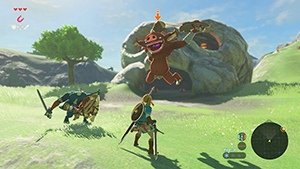
Let’s talk about the equipment, first. In a huge departure from previous games, there are weapons and shields literally everywhere in this game. It’s an interesting mechanic that has you finding and using everything you come across from tree branches, lumber axes, rusty swords, halberds, fire swords, boomerangs, bows, shields, clubs, magic wands, and way more. This all looks good on paper, until you realize that, apparently, in a way to make the player need to pick up and horde these weapons, everything is seemingly made out of balsa wood! You’re lucky to get out of a single engagement without losing at least 2 of your weapons in the process, and, maybe this wouldn’t be SO bad, if there were reliable ways to stock up on these weapons, or at least the weapon TYPES that you want to use - but the only way to get weapons is to stumble upon one in a shrine you haven’t explored yet, which is rare, find out just out in the wild somewhere, unlikely, or steal some from enemies - which typically end up being lousy clubs or staves… and then just about every ‘strong’ weapon or weapon with an effect (ie, flame, or lightning), is a two-hander, meaning you can’t use your shield with it.
So, I frequently find myself stumbling into an area with tough enemies, or having to fight a boss, only to find that I have nothing but torches, a nearly-broken spear, and a bunch of weak two-handed swords, and no arrows. You can sometimes buy a few arrows in towns, but never any weapons. So, instead of feeling like I have a lot of options and agency, I feel like I’ve overburdened with junk that I need to keep picking up to keep from being totally unequipped.
I even managed to find my way to the Master Sword, which required a threshold to be met before I could claim it, so I jumped through the hoops I needed, obtained the sword, thinking: “Finally! A reliable weapon that I can use without it breaking!” …and then the game told me that, since this is a MAGIC sword, I should ONLY use it when I have great need, or else it will STOP WORKING for awhile - effectively making it break just like the other weapons, only it repairs itself eventually.
There are so many BETTER ways they could have handled this mechanic. Instead of littering the world with infinite weapons that I care absolutely NOTHING for, start me out with having to deal with these sub-par weapons, but allow me to slowly acquire better, unbreakable equipment with an interesting story behind it - I got this cool club from a really hard puzzle shrine that took me an hour to solve, so I can stop picking up these Iron Sledgehammers that break in 5 minutes. And the ‘special’ weapons that I’ve found, like the fire blade, already has a trade-off: it’s a two-hander, that can set enemies and things on fire, but it takes a moment after lighting something on fire to re-light. Maybe it could still be two-handed (which means you have to decide to use it instead of a shield), do a little less damage than your standard two-hander, and have the fire effect that has a long cooldown. This would give me a neat item with a story behind it that I can CHOOSE to pull out in situations which needs it.
Remember when I said that the game starts by requiring you to enter the first 4 shrines and collect the rune powers within? It’s pretty cool - the powers can be fun, although there really aren’t a lot of places outside the shrines that you use them, except to find another treasure chest with an opal in it. But, the worst part, so far, is that: those 4 powers? Well, that’s it. You get a glider after getting those 4 powers, which is the best item in the game, but, after that, other than Heart Containers and Stamina Boosts, and the camera and amiibo functionality you can unlock from an NPC, you NEVER get any more powers or items. No hookshot, no swim fins, nothing. I did get a piece of armor that gives you the ability to swim up waterfalls, but that was part of a questline and I needed to use it for one part of the game and never again.
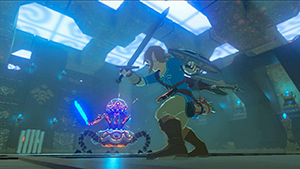
Every shrine is doable out-of-order, because they ALL require only those rune powers or other basic abilities, and that’s it. So far, I’ve never come up to a insurmountable puzzle that I needed to come back to later on after finding a new power or item later on. It would be like starting Zelda 1, and, instead of the old man giving you the wooden sword, he gives you EVERY item in the game (except for upgrades), and says: “have fun!”
This goes back to the feeling of growth and exploration. I simply walk into a shrine, I know that I can solve it with what I have, and I just do it. I don’t have to think back and remember anything.
There is one exception that I know about - there are 4 quest-specific locations that seem to reward you with a new, unique passive power that, while neat, are not required for any puzzles or advancement.
There might be some more exceptions that I haven’t come across, yet, but it feels like that’s not the case.
You might have noticed something I haven’t talked about at all, yet. Well, it’s time to talk about them now: The Dungeons. Specifically - there aren’t any.
What? Well… I guess the shrines are meant to replace the dungeons, except… they’re just not the same! Very few shrines contain even one enemy. I think I’ve seen, at most, 5 in one shrine at once, and three of them were on top of a patch of leaves you were meant to set on fire to kill them. Even the combat shrines are simply: fight this one guardian enemy and get a prize. Nothing complicated.
So where are the huge, sprawling, key-and-monster filled labyrinths? The challenge of trying to remember where there was a locked door when you finally find a key, and then you have to fight a room full of interesting enemies to get back to that door, etc. Cleverly constructed, cohesive structures with an interesting aesthetic that leads you to uncovering a boss fight…
Oh yeah, there aren’t really many bosses then, either!
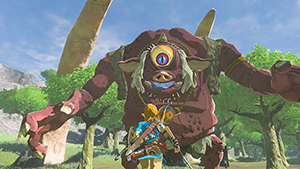
Around the world, you might stumble into a bigger enemy, like the Hinox, which displays its name and a boss-like health bar when you engage it. But these have, so far, just been out in random locations, and not needed for anything.
There ARE four locations that are the closest thing to a ‘real’ dungeon that I’ve come across so far. Without getting too specific, there are these locations that you are asked to visit to reclaim from the main villain of the game. But they are less like a dungeon and more like a slightly bigger shrine, again, almost entirely enemyless, and basically one big chamber and a ‘gimmick’ to be able to solve it. Upon solving these mega-shrines, you have to fight a boss, but, the boss is literally just a generic demon-looking minion of the main villain, and they act just about the same as any other enemy, but with more health.
So, yeah, unless you like mostly empty shrines, and about 4 actual bosses that are all the same, and weapons that break all the time, these feel like problems. I complain, not because I think that it totally ruins the game, I’m all for shaking up the formula and changing things, but I honestly think that these areas totally fail to make the game feel like the adventure that it could be.
But let’s not dwell too much on these negative, let’s talk positive again.
The Beautiful
I’ll just put this out there: the game is gorgeous. Everything looks fantastic. Nintendo faced a ton of backlash when the first screens of Wind Waker were unveiled that showed a cell-shaded, cartoon style, but that game honestly looks much, much better than Twilight Princess, which came later and had more ‘realistic’ style.
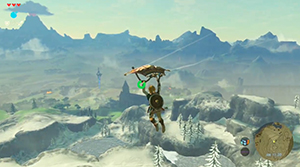
Breath of the Wild seems to have tried to get the best of both worlds, and they did a great job, It’s cell-shaded, but with texture, and like shading and highlights that look drawn, but aren’t, and it makes it look almost realistic while being vibrant and just so good. Plus the attention to detail - trails of embers flying off your torch as you walk through a mist-filled forest and the wind blows pollen and dust around. Dark clouds roll across the plains bringing rain and thunder that you can watch approach. You can see fish in the water, animals in the distance hunting each other, moblins harassing travelers on the road, futuristic ancient technology that lights up, and so much more.
The music is wonderful, as well. It doesn’t overpower the game. Usually it’s just there to add some flavor as you wander around. It picks up when it needs to, in towns, or in combat. You’ll learn to dread the tinkling, piano music that means a giant guardian has noticed you from a distance. My favorite piece, so far, is the music that plays while you explore the area around Death Mountain which contains a creeping, intense version of the Death Mountain dungeon music from the first Zelda. Sadly, this track is missing from the Sound Selection album from the collector’s edition.
Conclusions
So, where does this leave us? Breath of the Wild does manage to call back to the original Zelda games - in more ways than one. The overworld exploration is fantastic, and full of wonder and discovery. You won’t find any shortage of puzzles that challenge you, although the rewards do little to help you grow. Growth is one thing that is sorely lacking in the game - you’re almost as strong as you’re going to get after the short tutorial area, only gaining more health, stamina, and a few passive bonuses over time. You won’t be finding any sprawling, complex dungeons, or loot, but you will find many, many more shrines instead.
It’s a beautiful game, and most of the charm is simply getting lost in the overworld, stumbling on something new, and constantly expanding the borders of your map. I’m still enjoying it a ton, I just wish that it offered MORE of the elements that one would hope to see in a Zelda game, like the dungeons or unique bosses.
Like I said, I’ve only played half of the game so far (or at least, what I believe to be half), it may still surprise me in some ways - maybe after a point the ground erupts with a bunch of actual dungeons that you get to explore, finally, but I really doubt it.
Anyway, despite my gripes, I still love it so far, and highly suggest it for anyone to play, the wonderful overworld makes up for it’s flaws with change to spare.
I rate The Legend of Zelda: Breath of the Wild: 88%
